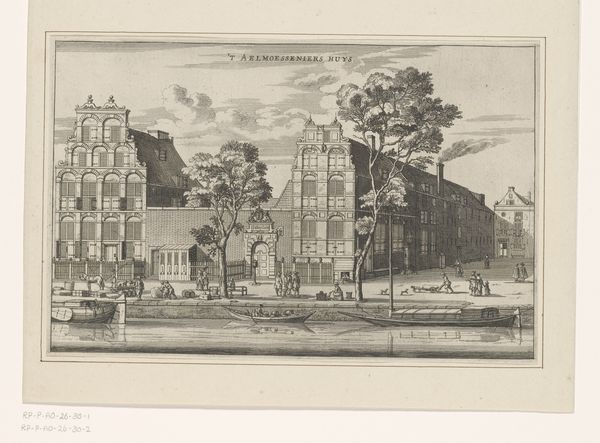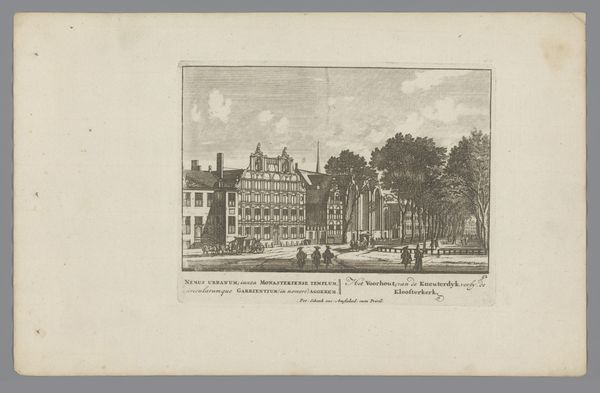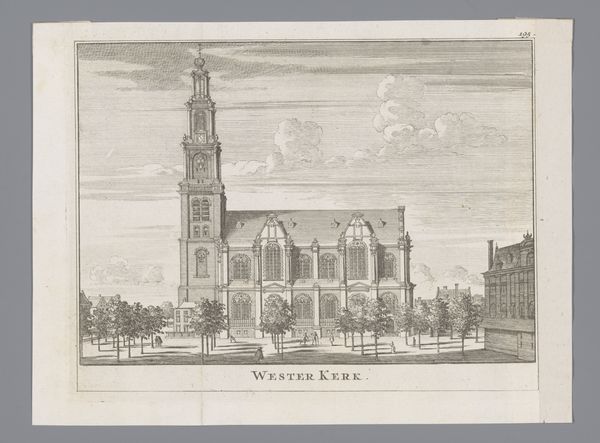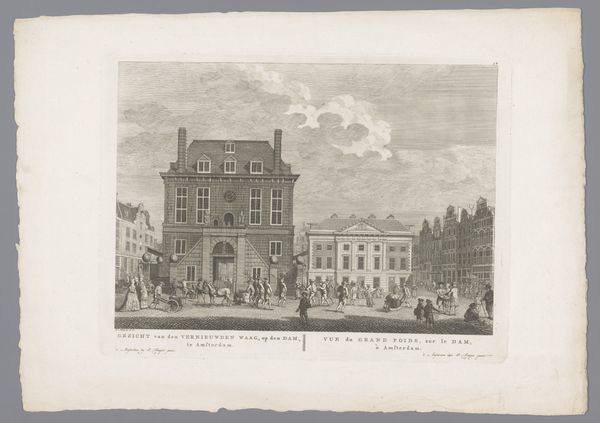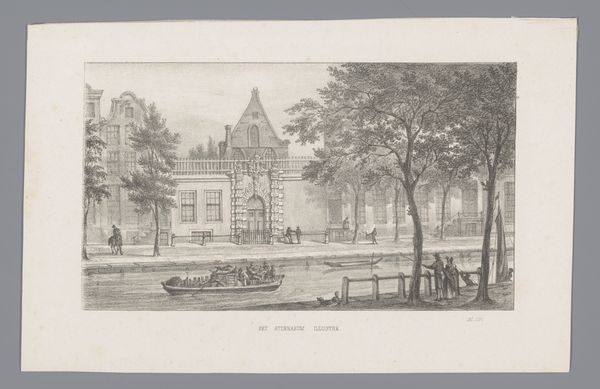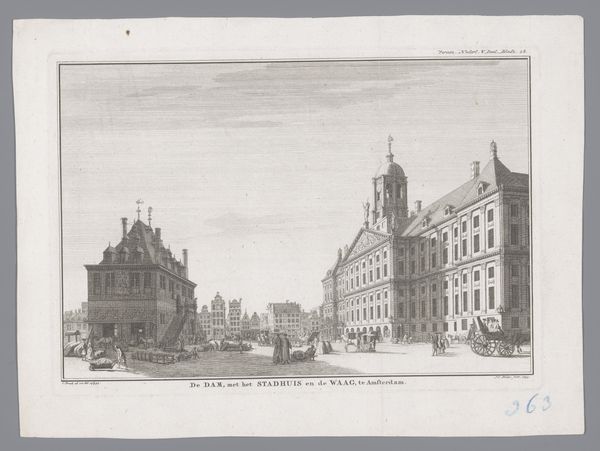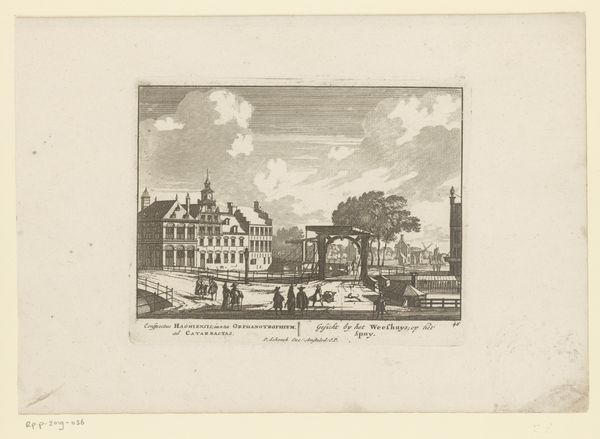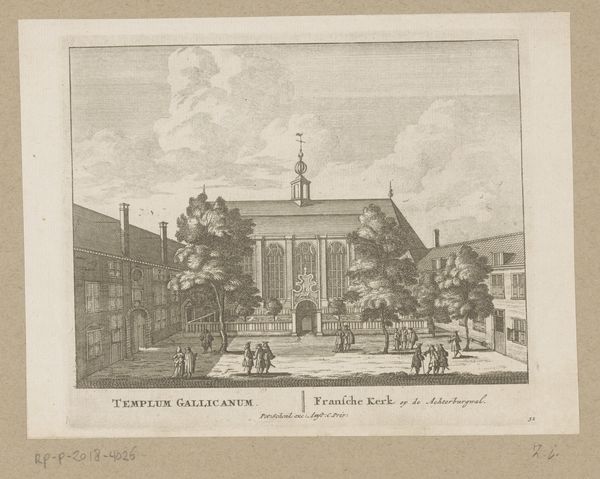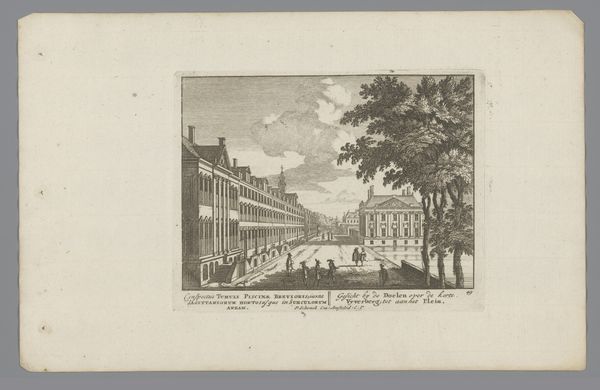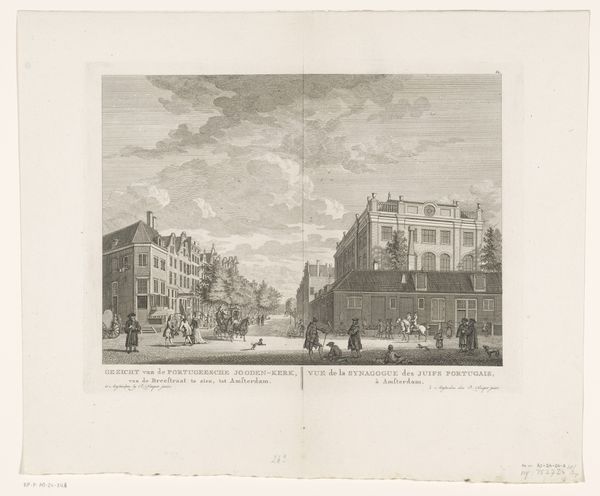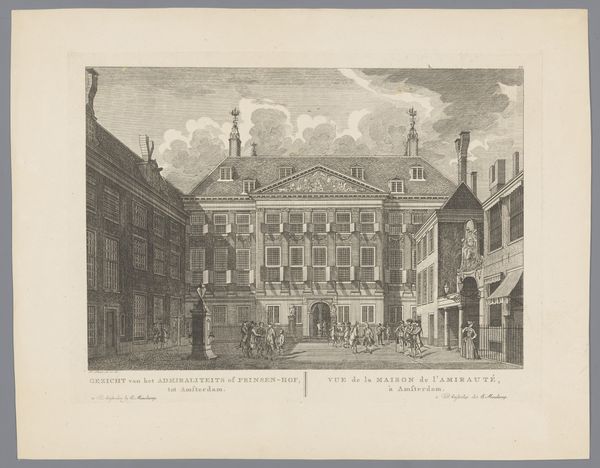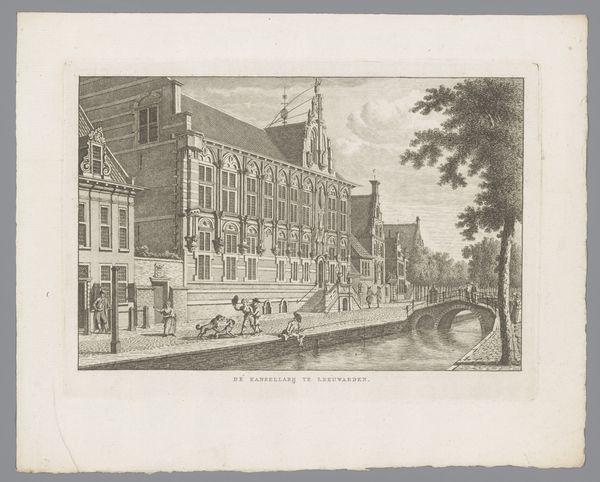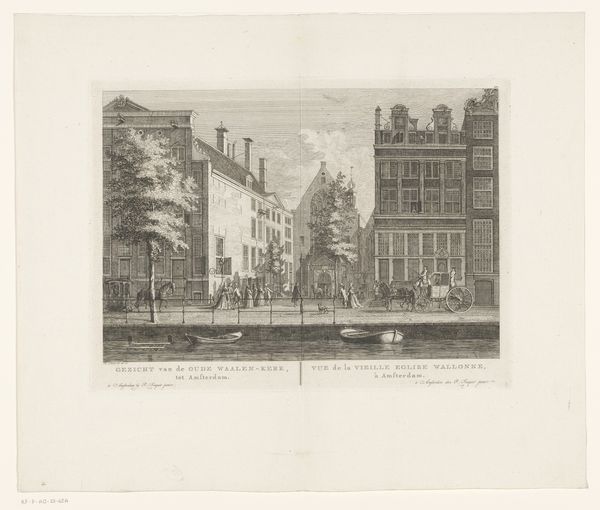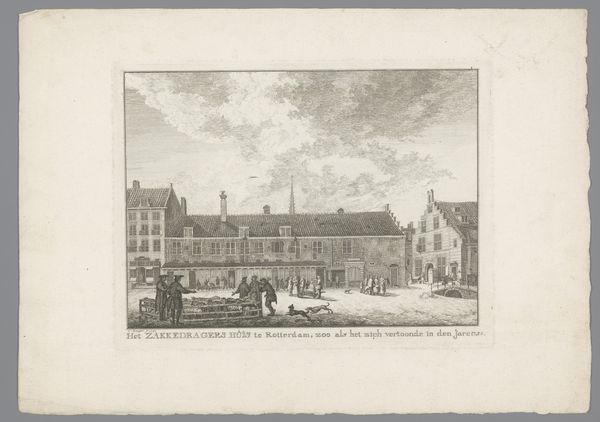
Gezicht op de Kloveniersburgwal met het Trippenhuis en de Waag op de Nieuwmarkt 1726
0:00
0:00
anonymous
Rijksmuseum
print, etching, engraving
#
baroque
#
dutch-golden-age
# print
#
etching
#
landscape
#
cityscape
#
engraving
Dimensions: height 151 mm, width 187 mm
Copyright: Rijks Museum: Open Domain
This print of the Kloveniersburgwal, showing the Trippenhuis and the Waag on the Nieuwmarkt, was made anonymously using engraving techniques. The incised lines on the metal plate determined whether it was rough or smooth, or deep or shallow, allowing for the printmaker to modulate light and shadow. Engraving, as a process, required careful planning, physical strength, and control. The burin, used to carve lines into the metal, demanded skill to avoid slips, while the repetitive nature of the work speaks to the realities of early modern labor. The social significance of this print lies in its depiction of Amsterdam's commercial and civic life. The Trippenhuis, home to wealthy merchants, and the Waag, a public weighing house, symbolize the city's economic power. The print itself, made through a process of reproduction, reflects the growing accessibility of images and information in a burgeoning capitalist society. By examining the materials and methods behind this image, we can appreciate how prints like these, often overlooked as mere documents, are important artifacts of labor, technology, and social life.
Comments
No comments
Be the first to comment and join the conversation on the ultimate creative platform.
